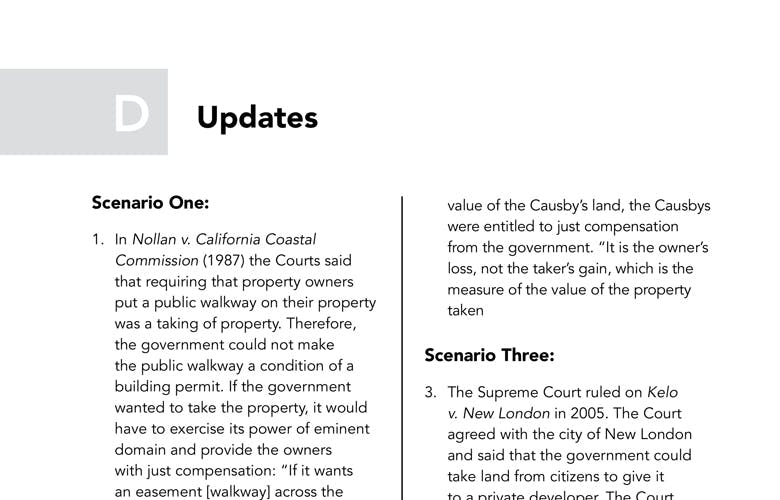Handout D: Updates
Scenario One:
In Nollan v. California Coastal Commission (1987) the Courts said that requiring that property owners put a public walkway on their property was a taking of property. Therefore, the government could not make the public walkway a condition of a building permit. If the government wanted to take the property, it would have to exercise its power of eminent domain and provide the owners with just compensation: “If it wants an easement [walkway] across the Nollan’s property, it must pay for it.”
Scenario Two:
The Supreme Court found a taking in United States v. Causby (1946) when low-flying jets at an airbase made farming impossible on nearby land even though the government never actually took the land itself. The Court said that because the government’s actions led to a loss of the economic value of the Causby’s land, the Causby were entitled to just compensation from the government. “It is the owner’s loss, not the taker’s gain, which is the measure of the value of the property taken.
Scenario Three:
The Supreme Court ruled on Kelo v. New London in 2005. The Court agreed with the city of New London and said that the government could take land from citizens to give it to a private developer. The Court explained that it had “rejected a literal requirement” of “public use” in the Takings Clause of the Fifth Amendment. The phrase “public use” could be interpreted as “public benefit.” Therefore, the government can take private property from an individual and give it to a private developer because the taking will result in “economic development” for the region.
